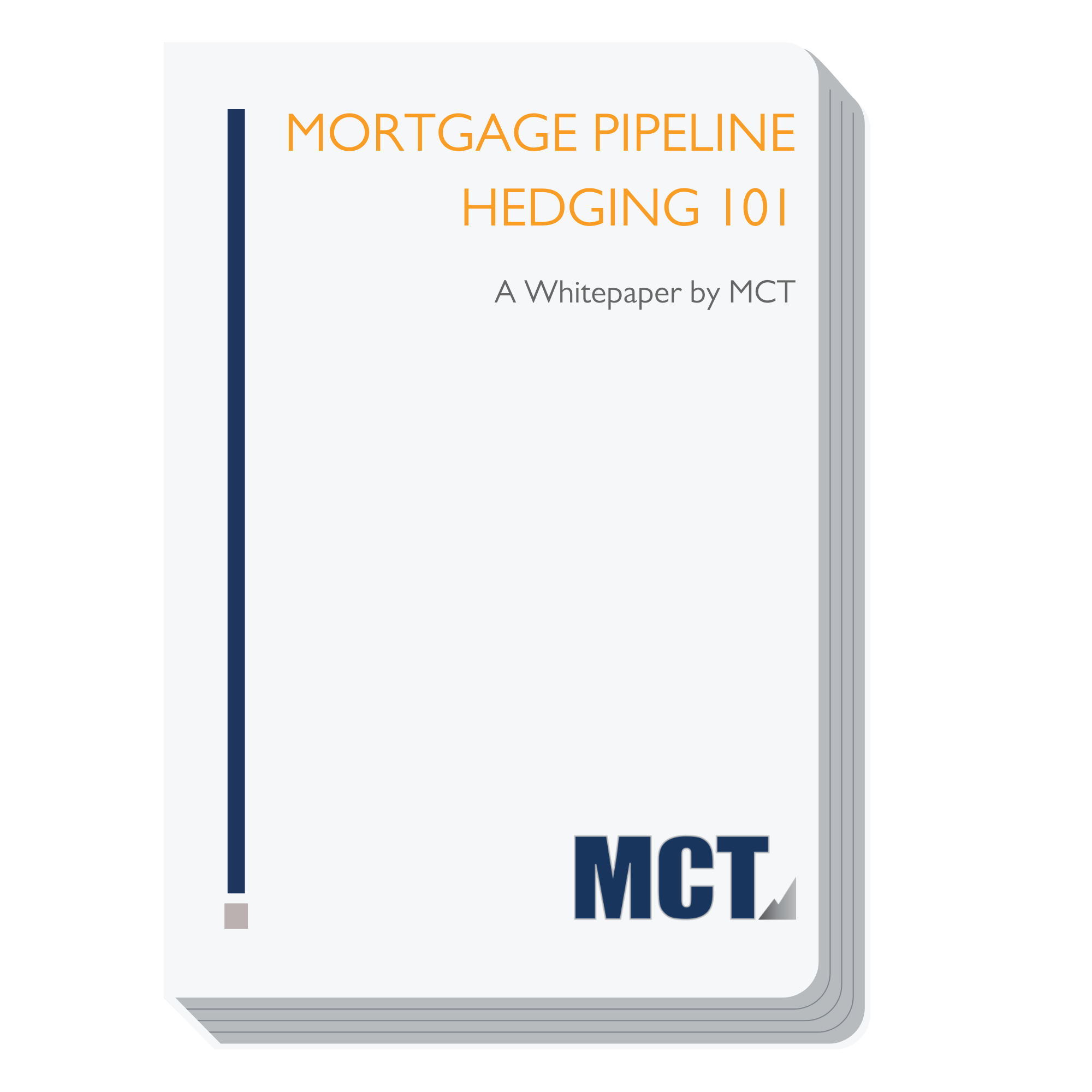 As your trusted capital markets partner, we strive to present applicable solutions for headache-inducing problems – such as completing tedious and manual calculations for your loan officers’ (LO) commissions.
As your trusted capital markets partner, we strive to present applicable solutions for headache-inducing problems – such as completing tedious and manual calculations for your loan officers’ (LO) commissions.
Margin compression has been a common topic recently, with LO commissions being a particular challenge we will reference in this article.
In this webinar recap, we will summarize the discussions of our panelists who explain: two drivers of margin compression in the market today, why LO commission management matters for keeping your business profitable, and how to eradicate inefficiencies in calculating LO commissions by leveraging a technology solution.
We are excited to present to you this live webinar recording, followed by a comprehensive summary of the topics discussed!
Video & Slides: Loan Officer Commissions – Margins & Management Webinar
In this national webinar, we invited our experts in the field to recommend best practices and present an effective software solution for managing or transitioning loan officer’s commissions.
We hope you will enjoy viewing the full event. Also available for viewing is the full presentation slide deck. For more details about the speakers and summaries of their discussion points please read on below in our synopsis after this webinar video.
In this video webinar you will learn about:
- Context and client statistics on margin compression from MCT
- How LO commission calculations are relevant to your business’ profitability
- How to leverage the E-COM software tool to:
- Automate commission calculations without spreadsheets or calculations
- Documenting your commissions’ workflow for audits
- Utilizing commissions data for top-level performance evaluations
Summary – LO Commissions: Margins & Management Webinar
In this national webinar that took place twice in July 2018, the speakers discussed current market trends, recommended best practices and reviewed an effective solution for managing or transitioning LO commissions.
This webinar featured the following panelists:
- Bill Petersohn, MCT
- Mr. Petersohn began the webinar by explaining the causes of margin compression to give the webinar context in light of current market events.
- Mark Wilson, CWDL CPAs
- Next in line to speak, Mark Wilson detailed how margin compression impacts business profitability. Most valuable were his recommendations for managing loan officer compensation to increase profitability.
- Michael Lewis and Aliyah Nurani, ATI
- Michael and Aliyah closed the webinar by demonstrating to the attendees how unnecessary time spent on LO commission management can be reduced significantly with a software solution called E-COM.
Ready to dive deeper? Download our latest whitepaper!

MCT Shrinking Margins Context & Client Statistics
About Presenter – Bill Petersohn – MCT, Managing Director & Business Intel. Lead
 Mr. Petersohn is a former director of GMAC Bank in the Bulk Acquisition Group where he was responsible for National Accounts and Bulk Sales and Operations. Mr. Petersohn has been directly responsible for developing and supporting several acquisition programs that include Assignments of Trade, Direct Trades, Bulk Purchases, Fannie Mae 3D – a joint effort between Fannie Mae and GMAC Bank, and a Conduit Acquisition strategy with Wall Street Investment Banks and REITS. Mr. Petersohn is currently managing director and head of the Business Intelligence division of MCT which provides competitive intelligence, operational audits, and actionable data insights to make MCT clients more profitable.
Mr. Petersohn is a former director of GMAC Bank in the Bulk Acquisition Group where he was responsible for National Accounts and Bulk Sales and Operations. Mr. Petersohn has been directly responsible for developing and supporting several acquisition programs that include Assignments of Trade, Direct Trades, Bulk Purchases, Fannie Mae 3D – a joint effort between Fannie Mae and GMAC Bank, and a Conduit Acquisition strategy with Wall Street Investment Banks and REITS. Mr. Petersohn is currently managing director and head of the Business Intelligence division of MCT which provides competitive intelligence, operational audits, and actionable data insights to make MCT clients more profitable.
At MCT we observed that all of our clients experienced margin compression into Q1 and Q2 of 2018.
During this time we observed the following statistics:
- The 10-year treasury yield grew 45 bps leading to a decrease in loan pricing
- The FNMA 4.0 Coupon TBA price decreased from 104.630 to 102.010
- For MCT clients, the initial lock price for Q1 and Q2 was on average 50 bps less compared to Q4 2017
- Why? Originators that were in competition began to lock borrowers at lower rates to get the deal, therefore lowering the pricing.
Drivers of Margin Compression
As we are helping to manage our clients’ hedging and profitability, we felt it necessary to explain why TBA pricing dropped faster than expected. The main driver of this compression is that the demand for Mortgage Backed Securities (MBS) has dropped significantly.
This drop in MBS demand has two main drivers, the first of which is the federal reserve balance sheet runoff. Up until the end of last year, the Federal Reserve was a big buyer of MBS in 2007 and 2008 to help us get out of the recession. Now they are no longer buying that many and they are letting their balance sheet runoff about 20 billion annually. This is leading an oversupply and a lack of demand for MBS’s.
The second driver of the drop in MBS demand is a flattening yield curve (the spread between 2yr and 10 yr yields narrowed). The goal of big buyers of MBS’s, besides the Federal Reserve, is to make money on the spread of interest rates. Now that that spread is narrowing, MBS’s are less attractive of an investment, causing banks, REITs, and money managers to invest elsewhere.
Measuring & Managing Margin Compression
Financial Services entrepreneur and native Californian Mark Wilson is a mortgage banking CPA and the founder of CWDL, CPAs, parent company of Mortgage Banking CPA, a rapidly growing audit, tax, and business advisory firm. Mortgage Banking CPA is the consulting arm of CWDL CPA, which provides services to small independent mortgage bankers all the way up to large institutions. CWDL provides assurance, tax, and business advisory services to entrepreneurs, non-profits entities, individuals, school districts, colleges and local governments. Their services Include:
- Assurance Services – AUDITS, REVIEWS, COMPILATIONS
- Tax & Advisory Services – PLANNING & PREPARATION
- Business Advisory – FINANCIAL MANAGEMENT AND SUPPORT
- Fraud Investigations & Forensic Audits – EXAMINATIONS, AGREED UPON PROCEDURES
Contact us to learn more about CWDL CPAs
Here are some strategies that Mortgage Banking CPAs has used with clients to address the related topics of margin compression and LO commissions.
Making Up for Lost Margins with Loan Officer’s Commission Reduction
The bottom line is this: If the cost to manufacture and loan officer compensation has remained the same but gross price is going down, then your overall profit has to have gone down.
Tips for clients regarding shrinking margins:
- Pay close attention to changes in the factors that drive loans through the door such as gross price, number of deals, rates, LO compensation, and more.
- The loan officer compensation, if all other things remain the same, is the only additional area that you can change to recover the deterioration of your profitability
- The company being profitable is good for everyone involved
- It’s always a good time to look at your business model
Predictions for LO Commissions
At the Western Secondary 2018, Wilson learned from secondary executives that LO performance targets varied greatly in model, geography, and level of marketing support, but the LO compensation per loan was averaging at about 125 bps per loan.
These secondary executives all agreed that they think LO commissions of the future are going to reduced by an estimated 30-40 bps. This is because, if the gross price per loan has gone down, companies have to make up for the loss in profits due to shrinking margins somewhere.
Leading to a reduction in LO commissions is the speculation that LOs may not have such a significant role in the future, especially with rapidly advancing technology.
To learn more about these predicted trends in LO commissions, read the full discovery piece by Mark Wilson.
Recommendations for Businesses to Be More Profitable
The following are 3 very important recommendations for businesses to be profitable in spite of shrinking margins.
- Have a true profitability model – This allows you to analyze profitability by LO, product type, and by branch. When you discover which individuals or products are most profitable, you will know where best to focus your investment.
- Educate your LOs about what drives company profitability – Some business owners fear that reducing LO compensation will cause a downturn in production but Wilson has seen it done successfully with many clients already. When a company culture is centered around company profitability, LOs will be seek deals that bring the most value to the company.
- Hold LOs and branches accountable – Lastly, you want to hold non-producers accountable because they could be slowing down profitability for the other loan officers that are producing. Make sure there is a process to establish and reinforce key performance indicators (KPIs). This aligns everyone in the company behind shared goals.
Leveraging Technology to Manage LO Commissions
Awesome Technologies Inc. is a full managed services company that helps mortgage companies with complicated LOS systems to manage and streamline company workflow, increase employee efficiency, modernize their technology footprint and strengthen their bottom line. E-COM is ATI’s custom software solution that helps companies to easily and efficiently manage individualized compensation plans for Loan Officers. Their services include:
- System Administrative Services (SAS)
- Build, manage, support your LOS platform
- Set up and connect your LOS to internal systems and vendor services
- Make decisions to optimize your system strategies and best practices
- Custom Development and Programming
- Develop new or enhance existing products for your custom needs
- Custom integrations, SharePoint support & SSRS Consulting
Contact us to learn more about ATI.
Our last segment is an overview of ATI’s E-COM (Employee Commission & Onboarding Management) Software.
Does this scenario sound familiar? There are 81 active loan officers across 15 branches. They have over 20 commissions structures between the team. All of these agreements are managed in multiple Excel spreadsheets. It takes 12 days to complete commissions and they must be completed twice per month.
With E-COM implemented, the same company is now able to complete their commissions in only 3 days. This software tool (which was demonstrated in the video) assists mortgage professionals by completely automating the LO commission process in a secure and easy-to-use platform.
Here are some capabilities of E-COM that makes the LO commission process so much more manageable.
Managing Loan Officer Commissions without Email or Excel
- Select different types of commission plans.
- Tiers can be based on units volume or a combination of both
- Easily enter commission contract implementation date and calculate according to assigned dates
- If a guarantee is placed, the calculation will be reviewed with the guarantee at the end to determine the final payout
- Store data or contracts that can be quickly referenced during audits
- Draw recoup feature allows draw and commission balance to be measured
- Can integrate with any LOS that is out on the market. I.e. Encompass, LendingQB, Byte, and MortgageBot
- Choose between 3 management workflows that allow your LOs, Upper Management, or Administration to manage commission payment approvals
Performance Management with E-COM Dashboards
This last functionality of the E-COM system is one of the most impressive features of this software as it allows companies to address their concerns about shrinking margins by centralizing performance metrics based on LO commission payments.
There are two dashboards which would give custom views for either top-level executives or branch managers. Each view would allow decision makers in the company to view regional or individual earnings for performance analyses.
Many of MCT and ATI’s mutual clients are already using this tool and it typically takes 45-60 days for setup depending on volume.
Contact Us to Learn More
At MCT, we work to eradicate inefficiencies within our client base to help companies be more successful. We hope that the insights in this article will help you to increase efficiency and profits so that you can get ahead of your competition.
Contact us if you have any questions, if you would like to suggest a webinar topic, or if you would like to learn more about our partners who presented on the webinar panel. Enjoy related articles below.







